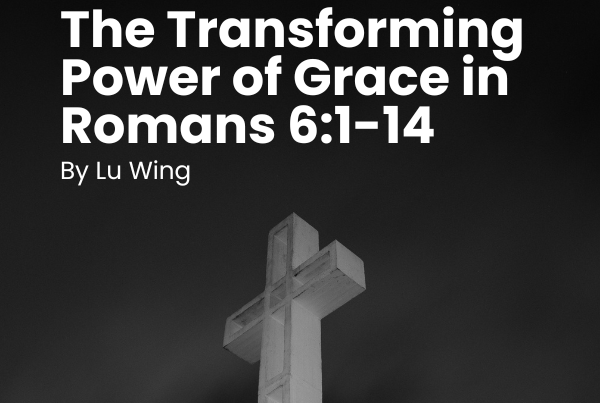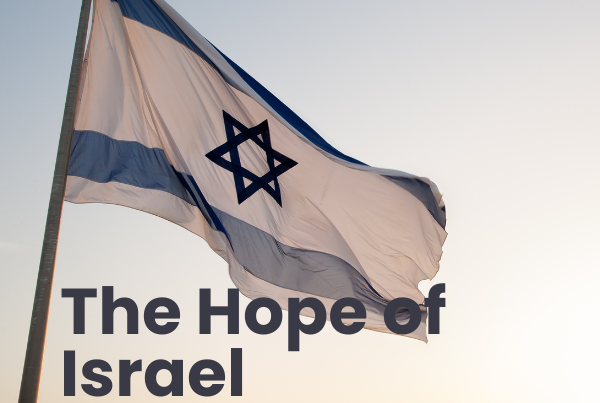
I grew up in Calvary Chapels. From my infant days in Calvary Anaheim to my formative years (and ever since) at Calvary Philly, I know the experience of growing up around the influences of the Jesus Movement. One of the marks of the faith of my parents’ generation was their outlook on the return of Christ—it was happening. And soon. Before I had a theological position on much of anything else, I had an eschatology, without even knowing what one was. We were getting raptured. At any time. And that’s all there was to it. (Though I do remember my mother speaking to me about not receiving the mark of the beast, which later led me to wonder if she had ever been a post-tribulationist.)
I would bet that experience is similar to many under 40 in our fellowship of churches. Things like prophecy charts and rapture movies were standard fare for many of us. And if you’re from that scene, you also know that in the last decade or so, lots of people seem to struggle with a certain “contempt of familiarity” when it comes to eschatology—especially the kind championed around Calvary circles. Those prophecy charts that held our early-adolescent attention slowly became jokes for blog posts and seminary classes. We could start to roll our eyes when our parents talked about the rapture. We might hear younger leaders actively, even astutely, teach in opposition to the eschatological views held by the original leaders and church planters among us. It may even come to seem like an inevitable, quickening move away from that “old” way of seeing things is underway.
But I have come to the conclusion that we need to stop and seriously look at all of this in the way we were taught—with rigorous bible study that courageously examines and communicates what we find in the pages of scripture. And in that spirit, I offer this beginning appraisal of the current state of eschatological expectation among our churches:
Where Calvary Has Traditionally Stood
In the decades since the hippies streamed into the chapel at Costa Mesa, Calvary Chapel has had several doctrinal emphases that marked it as a fellowship of churches. Among the more prominent in this mix was our eschatology (our teachings about the end times)—which has been consistently dispensational in the pre-tribulational vein. Of course, as with all areas of theology, there are varieties of different views that fall under this umbrella, but the defining factors of Calvary’s eschatology (the “distinctives,” if you will) have been:
• Practicing a kind of consistent biblical interpretation that leads one to expect what has been called literal fulfillment of prophecies
• Recognition of a distinction between Israel (the ethnic, biological descendants of Jacob) and the body of believers recognized in the New Testament as “the church”
• Expectation of a coming time of trouble on the earth, as defined by Daniel—7 years total in which will occur the fulfillment of the prophecies in the book of Revelation (the “tribulation”)
• Expectation of a rescue (before that time period) for the believing church currently on the earth when it begins—which could happen at any time, and therefore is described as imminent (the “rapture”)
• Expectation of the visible (re)appearing of Christ in the sky, at which time he will descend to earth and begin governing the entire world, a time period which will last for a 1000 years (the “millennium”)
• After this 1000 year time period, expectation of a final rebellion led by Satan, the final judgment before God’s throne, and the ushering in of a new created order, described as “a new heavens an a new earth”
In the past few years, however, I think we can all attest that this way of seeing the eschatological picture has lost some steam. You can find this situation both in the larger evangelical world in general, and also sometimes in our own fellowship of churches. Chief in these discussions are many younger brothers and sisters, including some younger leaders that are arising in Calvary Chapel, as well as some who’ve planted churches which are not now “officially” part of the Calvary fellowship of churches, but still orbit in similar circles, especially because of so many shared relationships.
Thinking through the causes and implications of this shift requires more space than a single blog post allows, so in my next post I’ll begin to examine a few of the more important reasons for why these changes have taken place, and in a third post I’ll (attempt to) offer some constructive, forward-looking responses.









